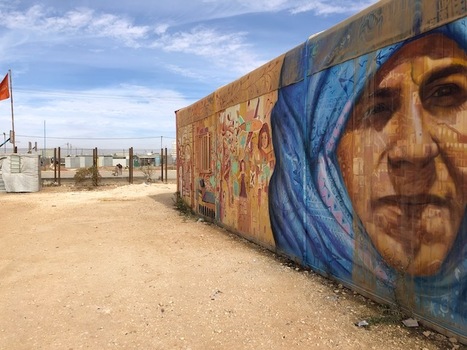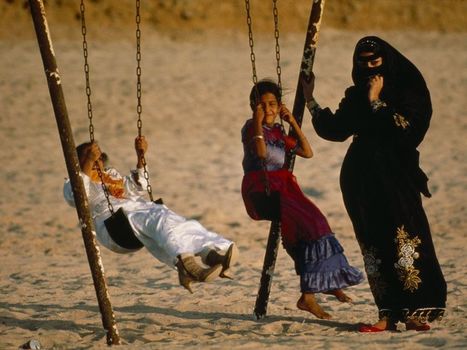"Spongebob Squarepants has been painted on the entire side of one caravan, and an Arabic phrase has been gracefully painted on another. This kind of incongruity I see throughout the camp. Two women are dressed in traditional full-length hijabs, for example, but the man behind them is wearing a Golden State Warriors t-shirt. A man in a robe encourages a donkey to pull a cart, yet right past him are young boys with smartphones huddled near a fence looking for better cell reception. A little further down the road and on my right I see a shoeless kid laughing and rolling a tire, but on my left, I spot a vast number of solar-powered panels. This constant juxtaposition is jarring and yet beautiful, and I am taken back by the energy of the place."
Research and publish the best content.
Get Started for FREE
Sign up with Facebook Sign up with X
I don't have a Facebook or a X account
Already have an account: Login
Resources linked to the NSW Geography Syllabus K - 10
Curated by
GTANSW & ACT
 Your new post is loading... Your new post is loading...
 Your new post is loading... Your new post is loading...
|

Taylor Doonan's curator insight,
March 23, 2018 12:42 PM
This article is about Hijabs and it talks about the religious aspect of Hijabs versus the cultural aspect. It states that the hijab is a sign of modesty, which is not a strictly Muslim ideology, but is addressed in many religions. It also talks about how the hijab is not directly mentioned in the Quran. It states that the hijab is almost as much a cultural symbol instead of a religious one and talks about countries with laws about hijabs and how women should dress.
Nicole Canova's curator insight,
March 24, 2018 9:19 PM
Hijab is the expression of a concept of modesty. It is not specific to one religion, nor is it specific to one region. This expression of modesty is encouraged, but not clearly defined, in Islam's holy texts; rather, it is informed by personal or cultural notions of what it means to be modest. Hijab's association with extreme or radical Islam has led to heated debates in Western nations about whether or not it is acceptable for people to express hijab, with many people citing "national/public security" as a reason to ban certain coverings.
David Stiger's curator insight,
October 31, 2018 11:29 AM
The geography of the hijab is important for Westerners to understand. Only two countries, Iran and Saudi Arabia, require women to dress by the strict standards of hijab. The vast majority of Middle Eastern, North African, and Muslim countries around the world do not have a legal dress code for women. Some laws and cultural traditions encourage women to dress modestly. Other countries like Tunisia, Turkey, and Syria (all predominantly Muslim) had laws to restrict women from wearing the hijab in order to be more secular and modern. Many other countries, like Pakistan and Jordan, do not have any laws on the book concerning if women should or should not wear a hijab. These countries understand that it is a personal choice regarding privacy, reputation, and personal faith. Like many religious precepts, the concept of hijab is open to interpretation. As a result, a Westerner can safely assume that having a large Muslim population, or a significant number of Muslims operating in a government, will not lead to a takeover of Sharia law or oppressive fundamentalist codes of behavior. Instead of being afraid of the unknown and making assumptions about entire societies, Westerners should find out more and be exposed to how diverse and broad differing cultures and societies can be.
|












What is it like i a refugee camp? A juxtaposition of conflicting images.